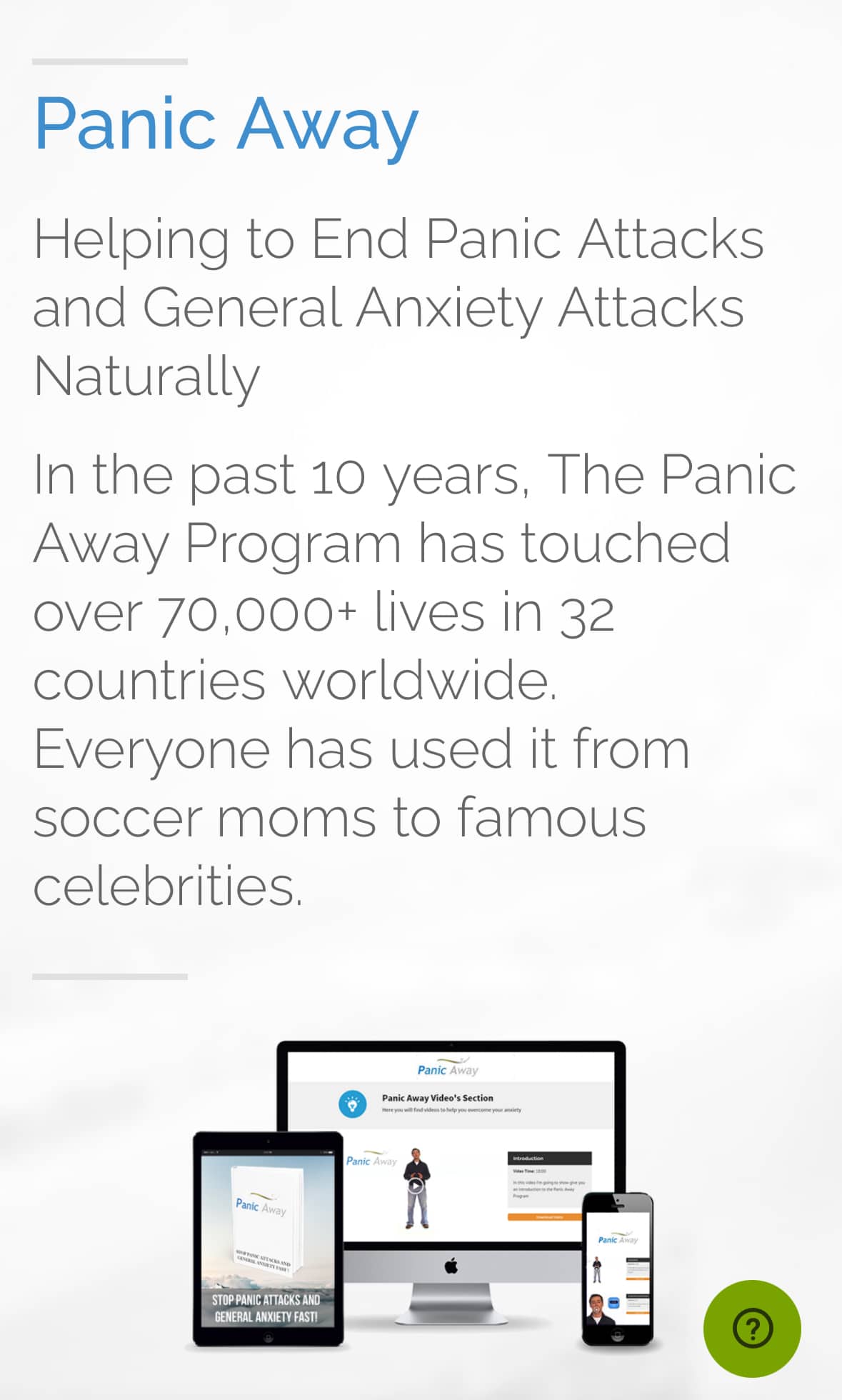23 Must Know OCD Facts In 2023
Medically Reviewed By – Juliet Gustafson, LMSW

OCD is defined by intrusive, unpleasant thoughts and repetitive obsessions. In response to these obsessions are ritualistic actions known as compulsions, which are time-consuming, significantly hinder functioning, and/or cause distress. Almost invariably, the onset of an obsession is accompanied by massive amounts of stress and anxiety. Furthermore, this related anxiety/distress is decreased by subsequent compulsions.
OCD, much like anything in this world has a stigma around it. It is harder than ever to distinguish fact from myth. So, we did our homework.
This post is all about the 23 must know OCD facts in 2023.

Ready to reclaim your life, one fearless step at a time? Your personalized path to anxiety-free living starts now!
Unlock your extraordinary future with PanicAway!
Don’t let anxiety define your story. Choose PanicAway, and step into a world bursting with limitless opportunities and unshakable self-assurance. Your personalized path to an extraordinary life is right here!
Meet PanicAway: Your Personal Roadmap to Liberation from Anxiety
Tired of letting anxiety steal the best moments of your life? It’s time to take charge and embrace a world filled with possibilities, free from fear and panic.
Why PanicAway is Your Perfect Ally in this Journey:
- Immediate Relief: Imagine those sleepless nights and crippling panic attacks becoming distant memories. PanicAway arms you with techniques for instant anxiety relief, putting you back in control.
- Empowerment from Within: It’s not about just managing anxiety; it’s about conquering it at its core. Rediscover your inner strength and emerge as a fearless, empowered version of yourself.
- Reclaim Your Freedom: Visualize a life where anxiety no longer dictates your choices. With PanicAway, you’ll savor the freedom to chase your dreams, explore the world, and seize every opportunity with unwavering confidence.
- Proven Success Stories: Join the community of individuals who’ve transformed their lives with PanicAway. You can be the next success story, and we can’t wait to celebrate your triumph!
- Comprehensive Support: You gain access to a treasure trove of resources, from life-changing e-books to enlightening audio guides. Plus, connect with kindred spirits on their own journeys to overcome anxiety.
1
The lifetime prevalence of OCD among U.S. adults was 2.3%
2
The World Health Organization has ranked OCD in “the top 10 most disabling illnesses of any kind, in terms of lost earnings and diminished quality of life. conditions (physical and mental) worldwide.”
3
Most females are diagnosed after 10 years of age
4
The average age of onset for OCD is 19.5 years
5
90% of people with OCD have another co-occurring disorder, such as anxiety or a mood disorder
6
After the age of 30, new onsets of OCD are rare
7
Some of the most common conditions that co-occur with OCD include: Anxiety: 75.8% comorbidity rate & Depression: 40.7% comorbidity rate
8
The average rate of lifetime suicide attempts for people with OCD is 14.2%, while suicidal ideation rates can vary from 26.3–73.5%.
9
In response to drug therapy, the OCD SSRI success rate can be as high as 40–60%.
10
One study showed the OCD relapse rate is lower in those who received standard CBT (20%) versus a limited course of drug therapy.
Interested in learning more about OCD? – Get your FREE OCD Worksheets now!
11
Approximately 2.3% of the population has OCD, which is about 1 in 40 adults and 1 in 100 children in the U.S.
12
The prevalence of OCD in a 12-month period is higher in females (1.8%) than males (0.5%).
13
In families with a history of OCD, there’s a 25% chance that another immediate family member will develop symptoms.
14
Those diagnosed with OCD spend an average of nearly 9 years with the disorder
15
Most females are diagnosed with OCD during adolescence (after age 10).
16
In the United States, about 2.2% of the population will experience OCD sometime during their lives.
17
Childhood OCD has a stronger genetic link than adult-onset OCD, with up to 65% having a genetic link.
18
About 25% of men with OCD develop their symptoms prior to the age of 10.
19
Only about 10% of people with OCD are fully cured of their symptoms, but about 50% do report symptom improvement with treatment.
20
The country with the lowest prevalence of OCD in its population is Taiwan, with just 0.4%.
21
In the United Kingdom, about 750,000 people have OCD, making up 1.2% of the population.
22
For US adults aged 18 and up, 1.2% reported having OCD in any given year
23
Those diagnosed with OCD spend an average of nearly 9 years with the disorder

Ready to reclaim your life, one fearless step at a time? Your personalized path to anxiety-free living starts now!
Unlock your extraordinary future with PanicAway!
Don’t let anxiety define your story. Choose PanicAway, and step into a world bursting with limitless opportunities and unshakable self-assurance. Your personalized path to an extraordinary life is right here!
Meet PanicAway: Your Personal Roadmap to Liberation from Anxiety
Tired of letting anxiety steal the best moments of your life? It’s time to take charge and embrace a world filled with possibilities, free from fear and panic.
Why PanicAway is Your Perfect Ally in this Journey:
- Immediate Relief: Imagine those sleepless nights and crippling panic attacks becoming distant memories. PanicAway arms you with techniques for instant anxiety relief, putting you back in control.
- Empowerment from Within: It’s not about just managing anxiety; it’s about conquering it at its core. Rediscover your inner strength and emerge as a fearless, empowered version of yourself.
- Reclaim Your Freedom: Visualize a life where anxiety no longer dictates your choices. With PanicAway, you’ll savor the freedom to chase your dreams, explore the world, and seize every opportunity with unwavering confidence.
- Proven Success Stories: Join the community of individuals who’ve transformed their lives with PanicAway. You can be the next success story, and we can’t wait to celebrate your triumph!
- Comprehensive Support: You gain access to a treasure trove of resources, from life-changing e-books to enlightening audio guides. Plus, connect with kindred spirits on their own journeys to overcome anxiety.
Final Thoughts on OCD Facts
It is our responsibility to raise awareness and educate people when it comes to OCD. Moreover, it is imperative to distinguish fact from myth regarding mental health disorders. OCD in particular is usually falsely described by the general public (I need to be clean I’m so OCD). The above list was researched and constructed based on several reliable studies. Which fact resonates the most with you?
This post was all about the 23 Must Know OCD Facts In 2023
References
- Author links open overlay panelAda H.ZoharPhDaPersonEnvelope, H.ZoharPhDaPersonEnvelope, A., a, & Epidemiologic studies show that by late adolescence obsessivecompulsive disorder (OCD) has a lifetime prevalence of 2% to 3%. The age of onset is earlier in boys than in girls. (2018, June 18). The epidemiology of obsessive-compulsive disorder in children and adolescents. Child and Adolescent Psychiatric Clinics of North America. Retrieved December 16, 2022, from https://www.sciencedirect.com/science/article/abs/pii/S1056499318301639
- Facts & Statistics: Anxiety and Depression Association of America, ADAA. Facts & Statistics | Anxiety and Depression Association of America, ADAA. (n.d.). Retrieved December 16, 2022, from https://adaa.org/understanding-anxiety/facts-statistics
- Fornaro, M., Gabrielli, F., Albano, C., Fornaro, S., Rizzato, S., Mattei, C., Solano, P., Vinciguerra, V., & Fornaro, P. (2009, May 18). Obsessive-compulsive disorder and related disorders: A comprehensive survey – annals of general psychiatry. BioMed Central. Retrieved December 16, 2022, from https://annals-general-psychiatry.biomedcentral.com/articles/10.1186/1744-859X-8-13
- Stein, D. J., Costa, D. L. C., Lochner, C., Miguel, E. C., Reddy, Y. C. J., Shavitt, R. G., van den Heuvel, O. A., & Simpson, H. B. (2019, August 1). Obsessive-compulsive disorder. Nature reviews. Disease primers. Retrieved December 16, 2022, from https://www.ncbi.nlm.nih.gov/pmc/articles/PMC7370844/
- U.S. Department of Health and Human Services. (n.d.). Obsessive-compulsive disorder (OCD). National Institute of Mental Health. Retrieved December 16, 2022, from https://www.nimh.nih.gov/health/statistics/obsessive-compulsive-disorder-ocd
- Williams, T. I., & Shafran, R. (2018, January 2). Obsessive–compulsive disorder in young people: Bjpsych advances. Cambridge Core. Retrieved December 16, 2022, from https://www.cambridge.org/core/journals/bjpsych-advances/article/obsessivecompulsive-disorder-in-young-people/AC7E6884143A5ED75017D1B2C9693BB6





